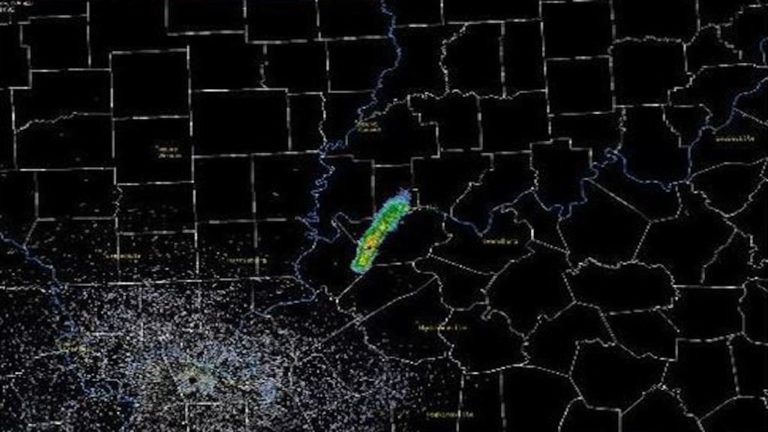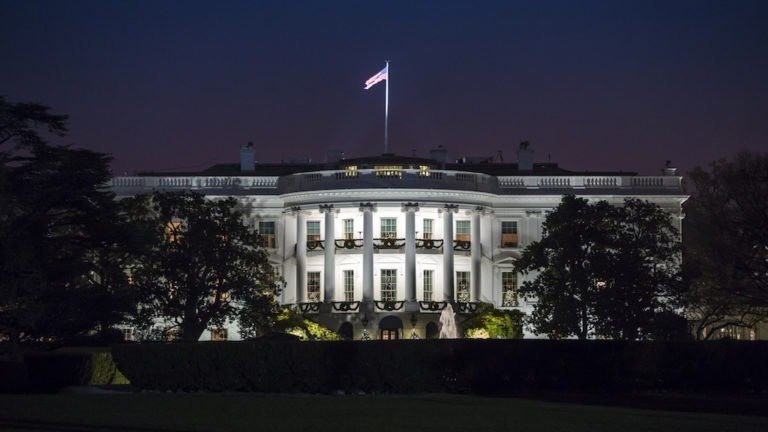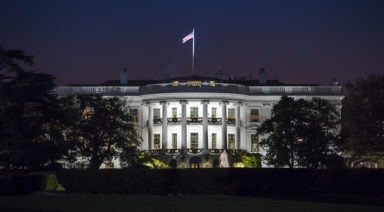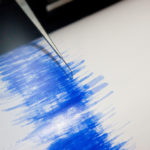Meteorologists Baffled by 50-Mile Wide Radar Anomaly in Midwest

On Dec. 10, a mysterious, 50-mile-wide radar anomaly passed from southeastern Illinois into Kentucky, eventually breaking up after lingering in the air for over 10 hours. The National Weather Service (NWS) and local meteorologists were baffled by the stream, asking the public to report on Twitter if they noticed anything visible in the skies.
The strange anomaly appeared around 3 p.m. CST as a blip on NWS doppler radar just south of Olney, IL, before continuing to expand as it moved south through Indiana and across the Kentucky border. The phenomenon was quickly given the hashtag #tristatewx, with speculation ranging from a flock of birds, to secret military operations, or an explosion of material raining down from space.
The most likely explanation though, is a military countermeasure called chaff, developed during WWII to scramble enemy radar. Doppler radar works by measuring the reflectivity of precipitation in the air, so in order to confuse radar the military realized it could release other types of material, including thin aluminum and metallic glass fibers to allow aircraft to travel undetected.
Aside from the questionable nature of chaff – regarding its environmental safety and the general lack in public knowledge of its use – it’s a common occurrence for meteorologists, who are typically forewarned by the military when it’s released.
In this case however, neither the Air Force nor any other branch took responsibility or gave notice to the National Weather Service that it would release chaff.
What we believe was chaff, released by aircraft this afternoon, has been showing up on radar for the past 10 hours now. Originated south of Olney, IL at 2:50 PM and now is 150 miles SE entering far north TN. pic.twitter.com/BxLQcW2aIh
— NWS Paducah, KY (@NWSPaducah) December 11, 2018
Did Nixon Leave Behind Evidence of Aliens in the White House?

If there’s anyone with insight into the existence of extraterrestrials, it’s the President of the United States. But when the topic of disclosure comes up, Richard Nixon’s name appears infrequently compared to other presidents tied to the government’s ufological secrets. But according to the testimony of one confidential informant, not only has the government made contact, but Nixon left evidence of the existence of aliens in the White House.
And it remains there to this day, he says, hidden in a time capsule – its location known only to a handful of people. Though, Nixon claimed it would surface when the time was right.
That informant is Earl Robert “Butch” Merritt, a man with a storied career as a confidential agent for the Nixon administration. A man who participated in a variety of intelligence operations in the nascent years of what would later become the NSA’s COINTEL program used to surveil, infiltrate, and disrupt various organizations and target groups even before Watergate.
And while Merritt’s credibility might seem questionable when discussing alien disclosure, his career as an informant is well documented, as are his high-level government connections. Which is why his revelation of a clandestine conversation with Nixon regarding the existence of alien technology and a living extraterrestrial entity is hard to immediately dismiss.
Evidence of Aliens in the White House?
President Eisenhower is usually the first name that comes to mind when discussing the White House’s knowledge of an alien presence, particularly in regard to an apocryphal program known as MJ-12, or Majestic 12.
Essentially, MJ-12 was an alleged group of high brass military and government officials organized after the Roswell UFO incident to deal with the implications of an alien presence and its subsequent technology.
And it was that technology recovered from the Roswell crash that is believed to have led to exponential leaps in our technological advancements, many of which have been used to bolster the military industrial complex – an industry Ike so famously warned the world about before leaving office.
Though he didn’t immediately succeed him, Nixon was Eisenhower’s Vice President, making the ufological connection all the more intriguing. It was also relatively well known that Nixon believed in the existence of UFOs and extraterrestrials, despite his release of Project Bluebook’s conclusive analysis; an Air Force study known as the Condon Report, which allegedly put the existence of UFOs to rest.
But according to his testimony, Nixon divulged his knowledge of a “sophisticated intelligent being” to Merritt toward the end of his presidency when he realized the Watergate scandal was becoming an imminent threat. According to Merritt, Nixon claimed the being was alive and in government protection.
He says Nixon entrusted this information to him as he considered Merritt one of his only confidantes, asking him to personally deliver a letter on the subject to Henry Kissinger – a copy of which allegedly remains hidden today somewhere in the White House.
A Dark Journalist’s Disclosure
Merritt’s testimony is corroborated by Douglas Caddy, a man who acted as a defense attorney for the parties convicted in the Watergate scandal and who claims he knows where Nixon’s ET disclosure letter is hidden in the White House. The two published a book titled, Watergate Exposed: How the President of the United States and the Watergate Burglars Were Set Up as told to Douglas Caddy.
Interviews with both men, including Merritt’s accounts of meeting Nixon, and his subsequent mission as letter courier to Kissinger, can be found on the website of Daniel Liszt, an investigative reporter on government and alien conspiracies, who goes by the alias “Dark Journalist.”
Liszt’s interview with Merritt is fascinating in that it delves into his history as one of the most notorious informants for the president and for other city, state, and federal government entities, due to his cutthroat and non-conventional tactics.
In fact, a New York Times profile piece on Merritt confirms this history, focusing specifically on his role helping New York authorities reclaim the Kenmore Hotel – a drug-addled building in Manhattan that was one of the epicenters of the city’s criminal activity in the ’90s.
Merritt was an indispensable tool for Nixon’s Huston Plan – the aforementioned intelligence program to infiltrate and disrupt parties he felt threatened by, particularly political opponents and anti-war groups.
While serving as an informant under the Huston plan, Merritt says he was warned by one of his sources, a switchboard operator next to the Watergate Hotel named Rhita Reid, of the impending investigation into the administration. Merritt said he tried to warn Nixon, but that he wasn’t concerned at the time and didn’t foresee it’s major implications.
Despite this dismissal, Merritt claims he was one of Nixon’s most trusted sources and was even given nicknames including “003” – an obvious James Bond reference. So, when the Watergate scandal played out and the days of the administration waned, Merritt claims he was brought into a secret underground room beneath the White House where Nixon revealed the existence of an alien entity and technology housed at the infamous Nevada military base, Area 51.
“We have possessed knowledge and we have in our protection subjects from a planet X,” Nixon supposedly told Merritt. “Knowledge we obtained so vast and powerful, whoever possesses this knowledge would be the most powerful person in the world,” Merritt recounted.
Merritt claims Nixon then wrote out a lengthy letter that included encrypted formulae to be delivered to Kissinger. He also included two cassette tapes, before sealing the letter and writing something on its outer flap, omitting his normal signature. Nixon then strapped the letter to Merritt’s stomach and sent him to deliver it to its intended recipient for unknown reasons.
Now, he claims that letter remains hidden somewhere in the White House, its location known to he and Caddy who say they will only reveal its location if the National Archives allows one of them to be present to read the letter publicly.
What is there to make of this testimony? While incredibly intriguing at first, there are some pretty farfetched and bizarre aspects to Merritt and Caddy’s story that might be questionable.
It seems if Nixon wanted to clear his name in the annals of history, he would have released this information himself, whether at that moment or before his death. Though in every instance of a president’s alleged attempt at disclosure, the truth always seems to be stranger than fiction.
For more on a U.S. President’s attempt at disclosure check out this episode of Deep Space:




































